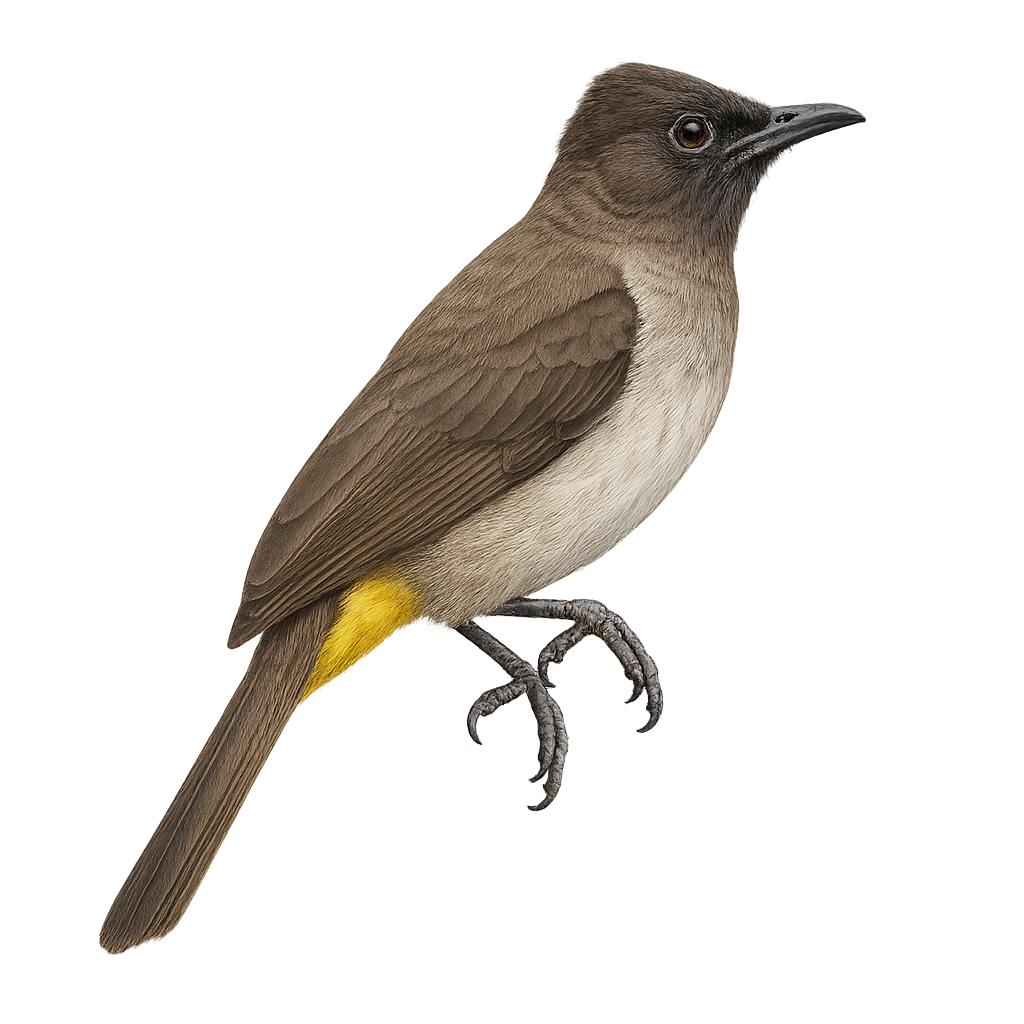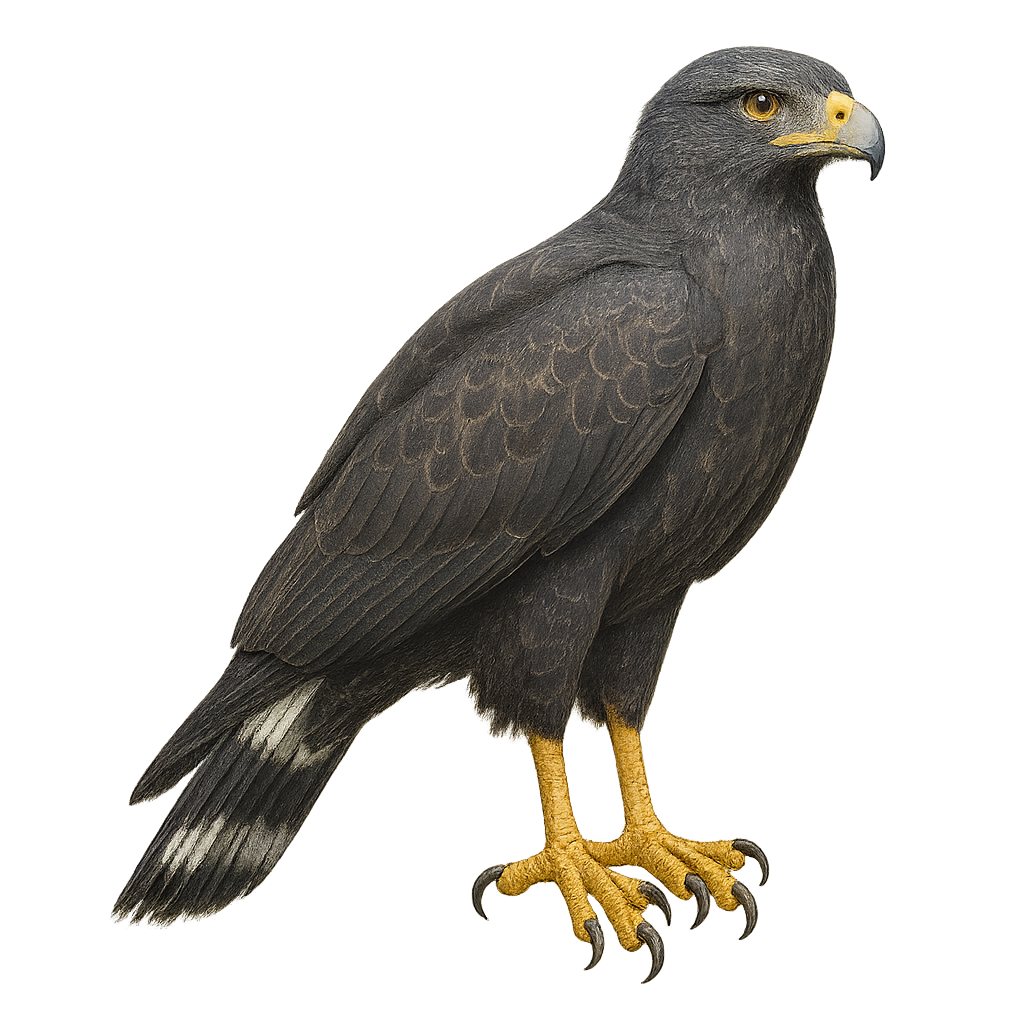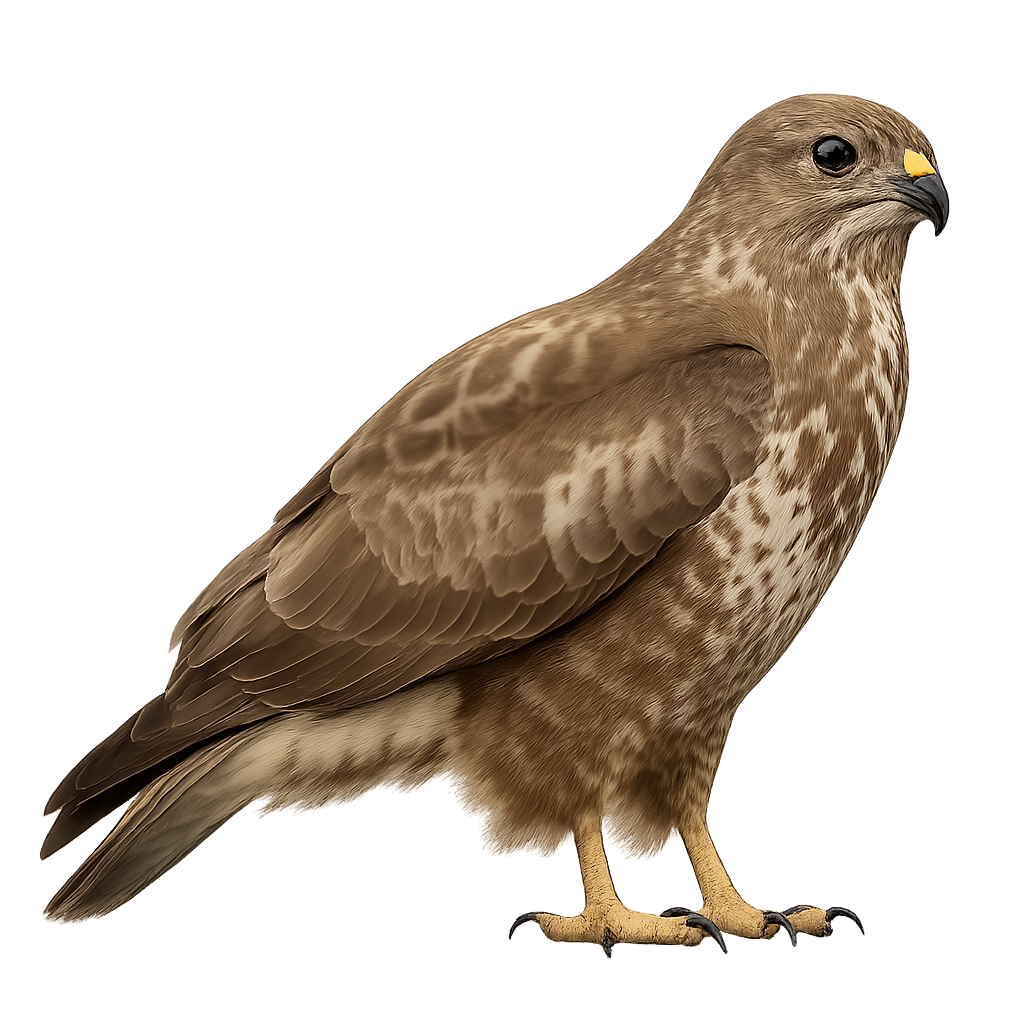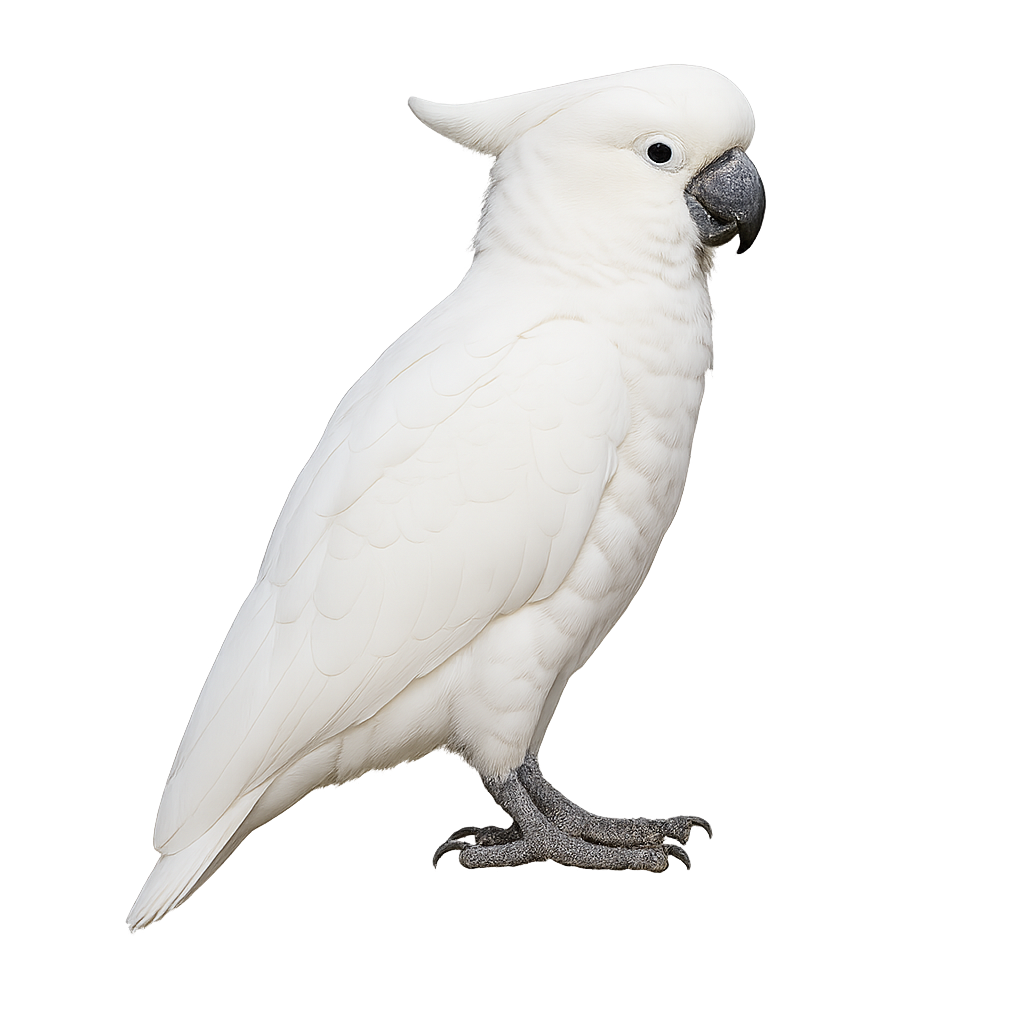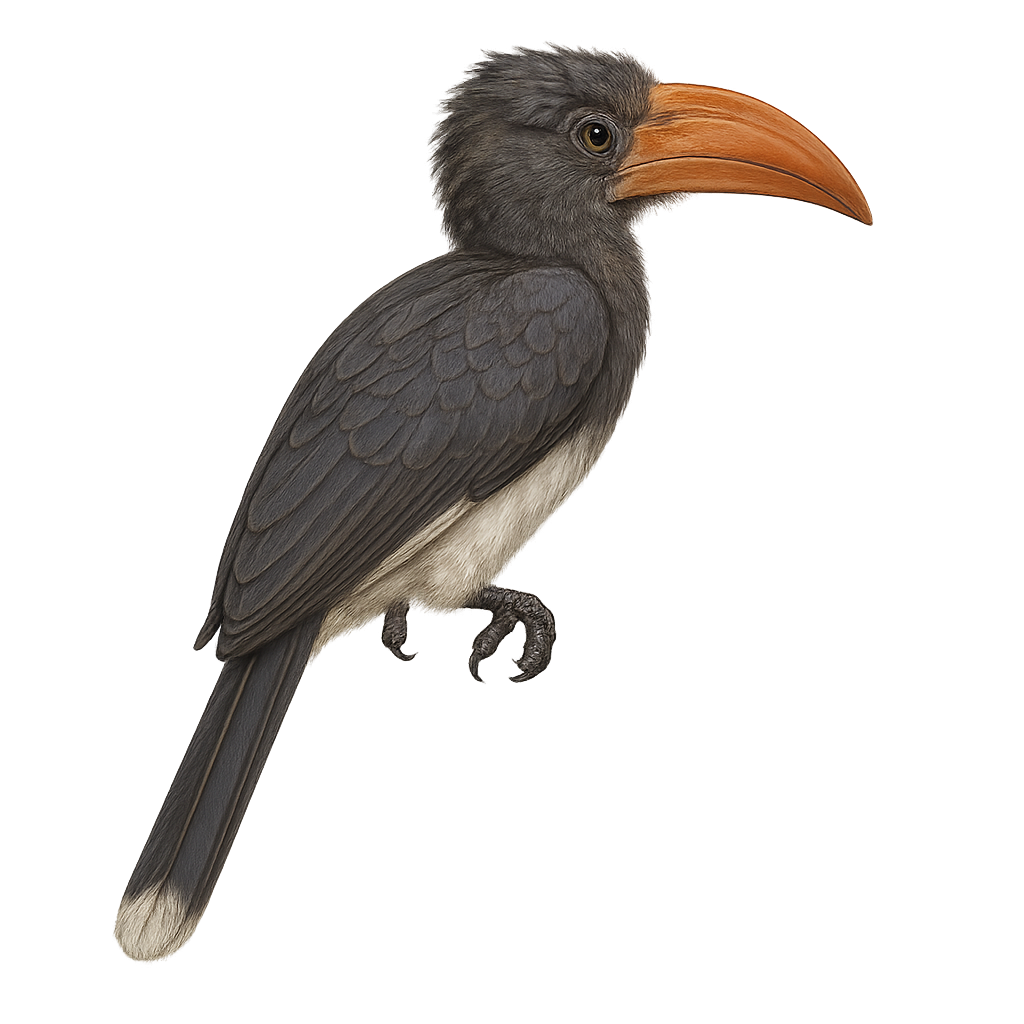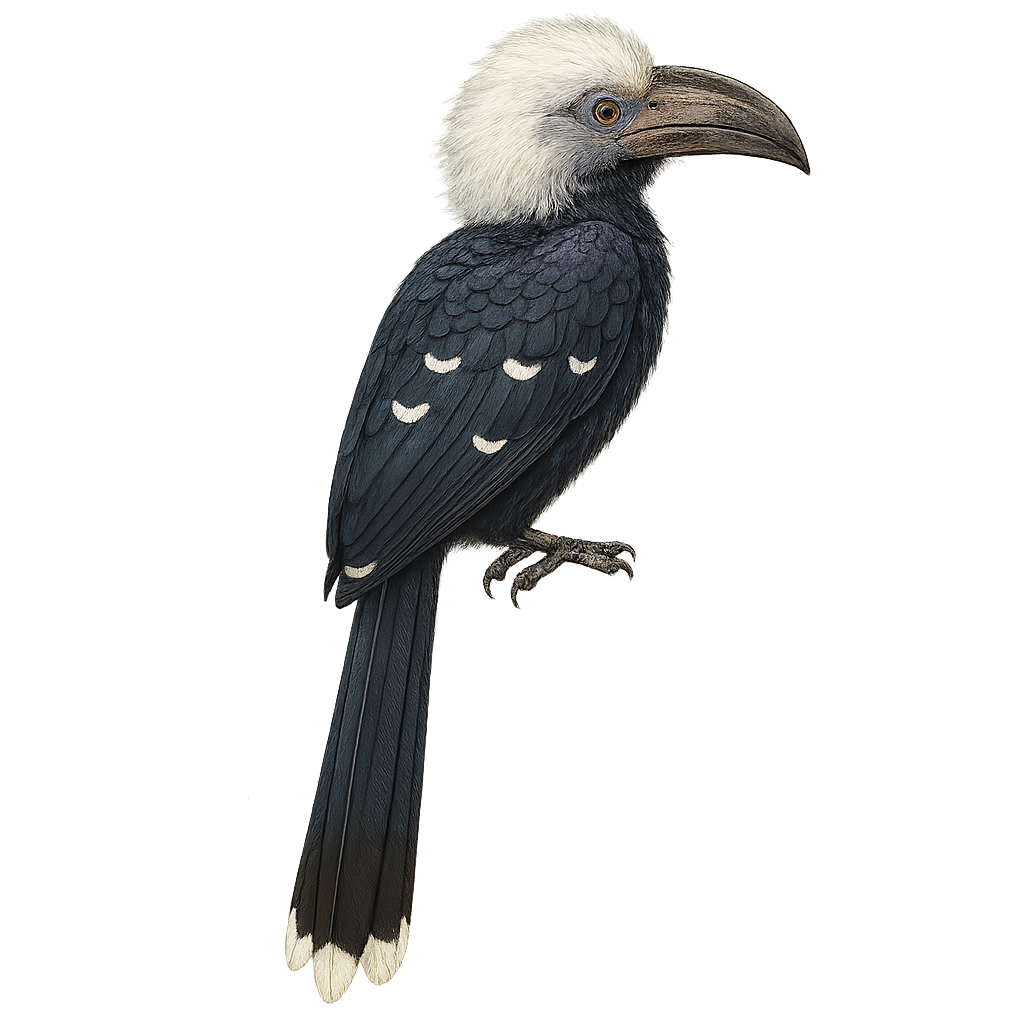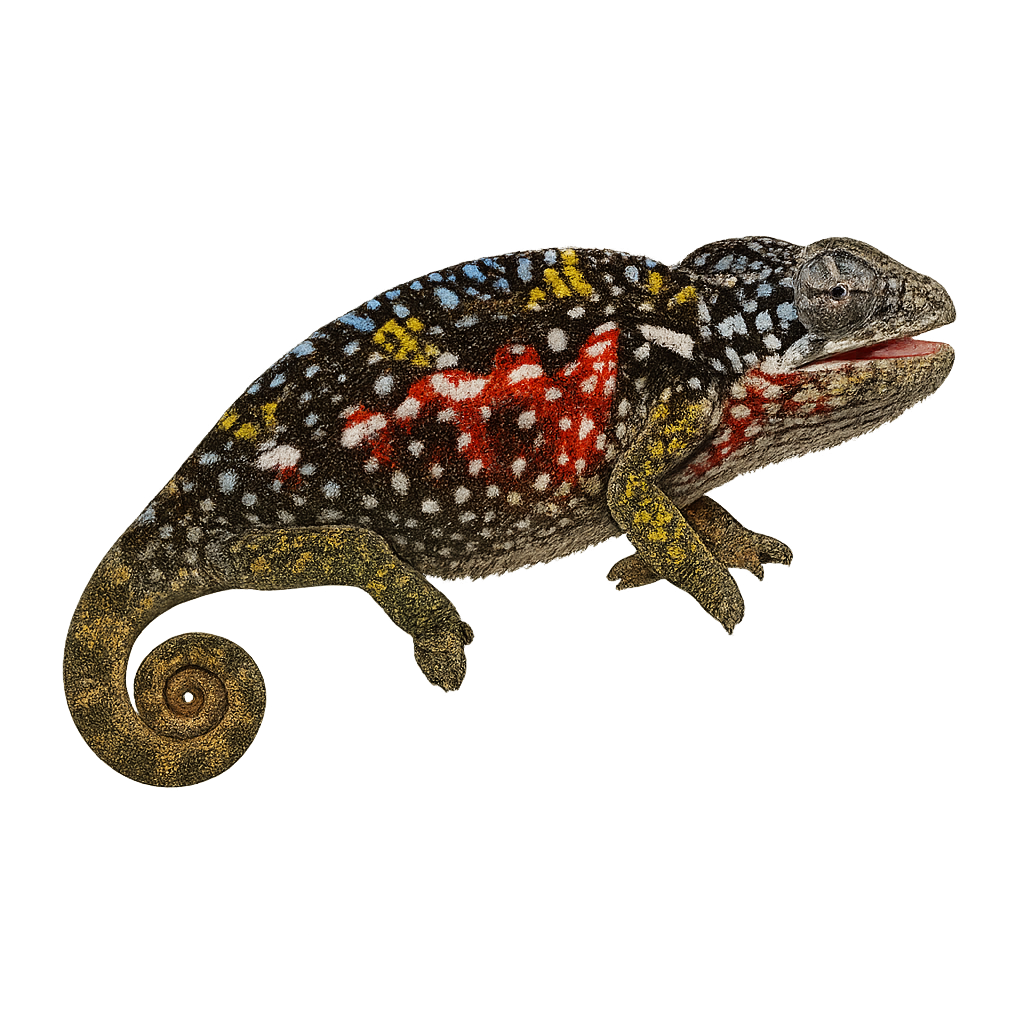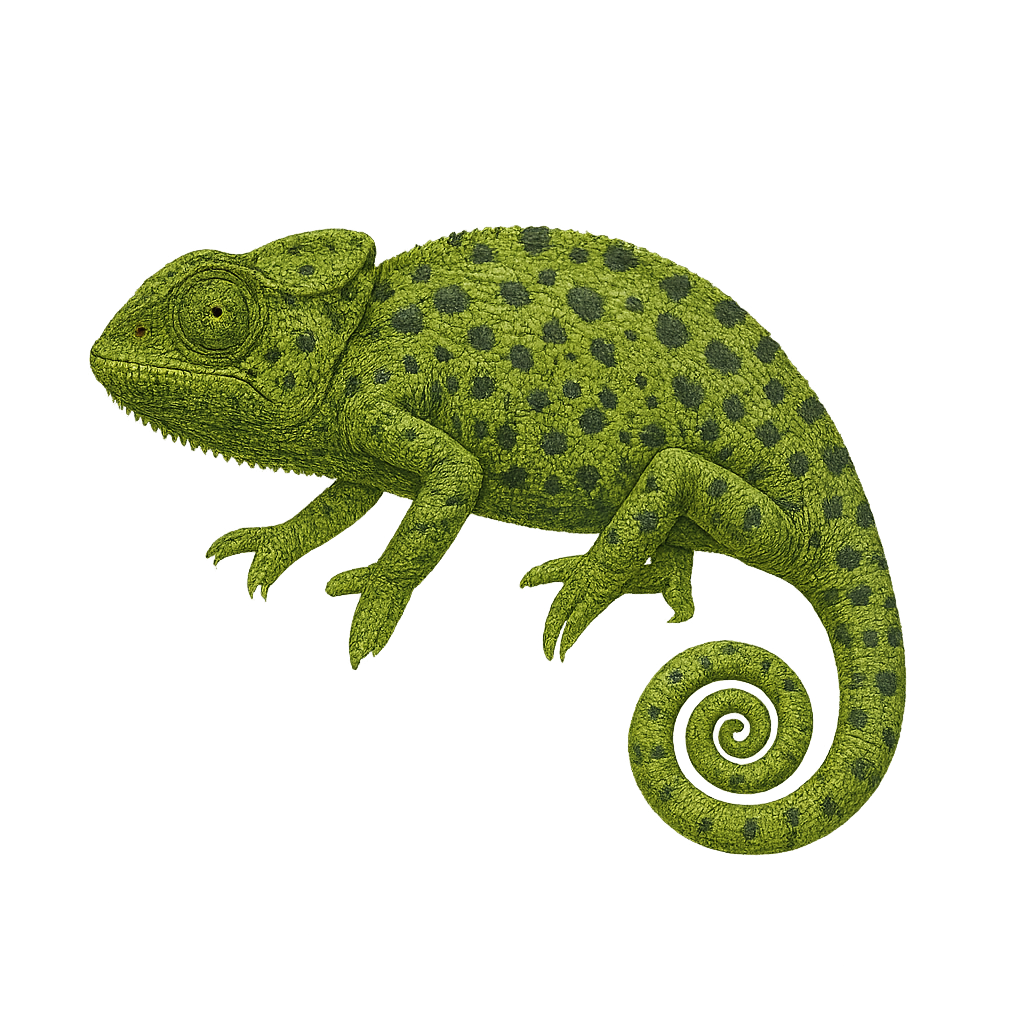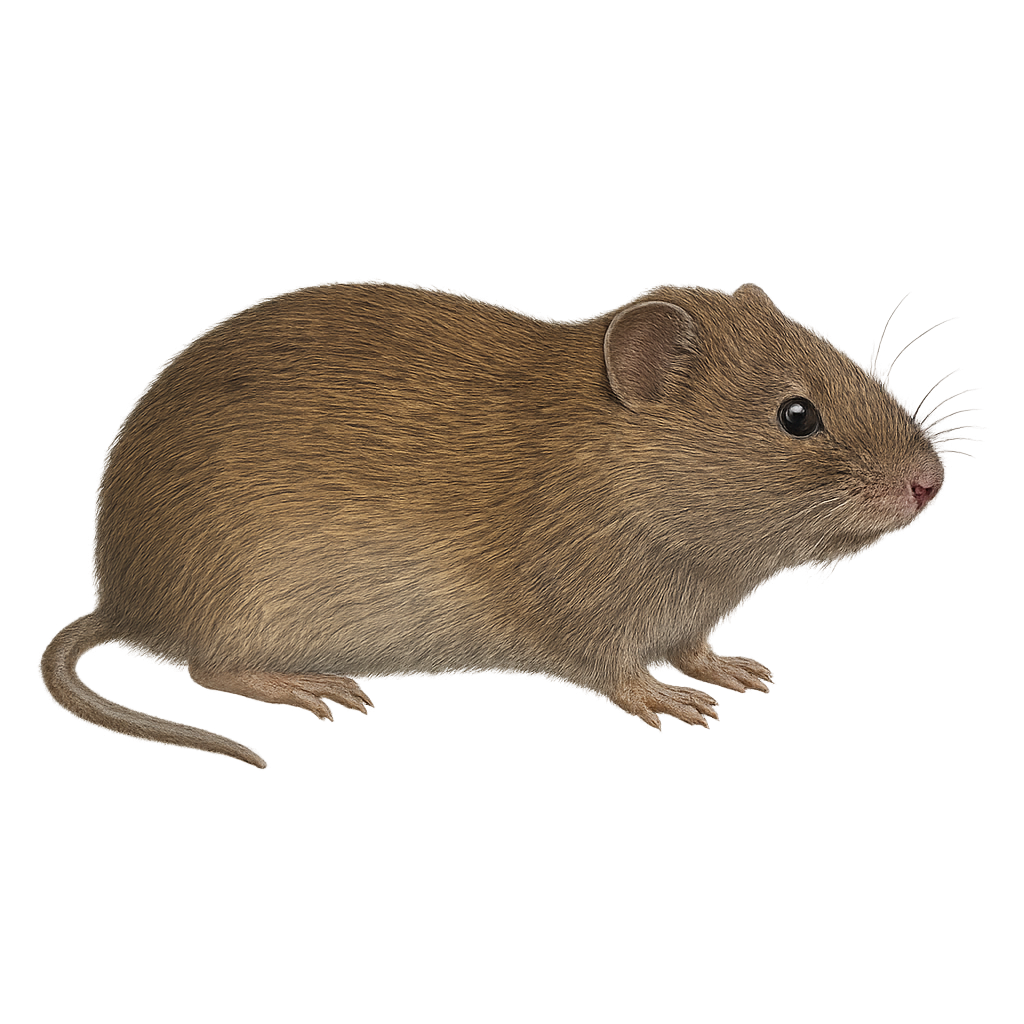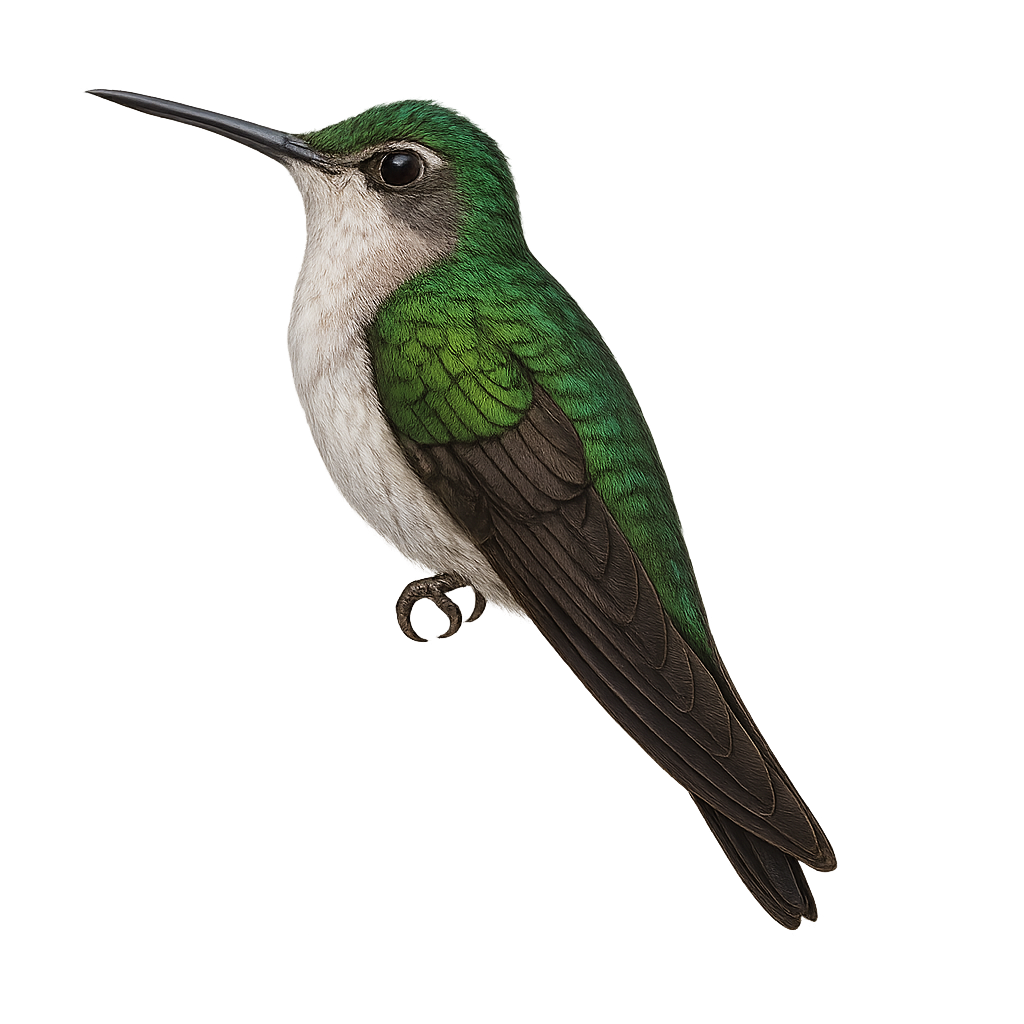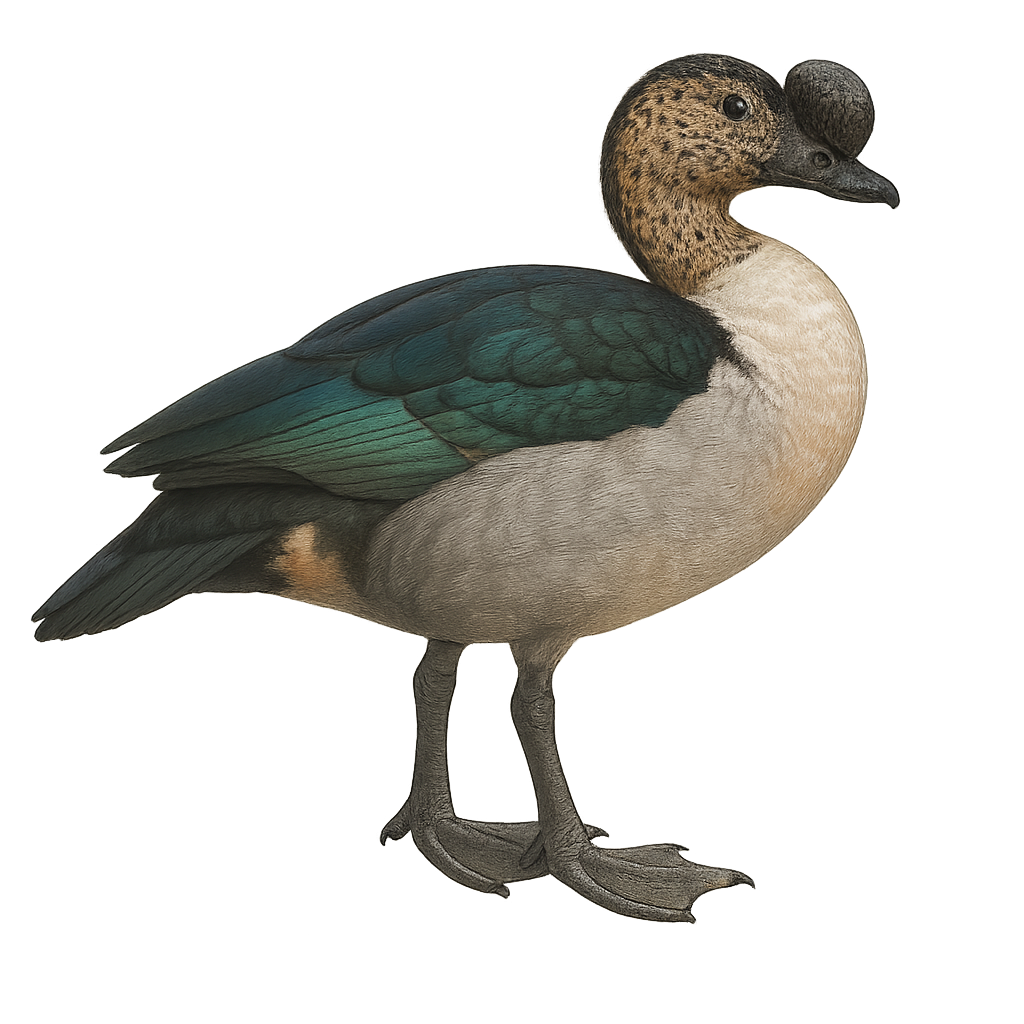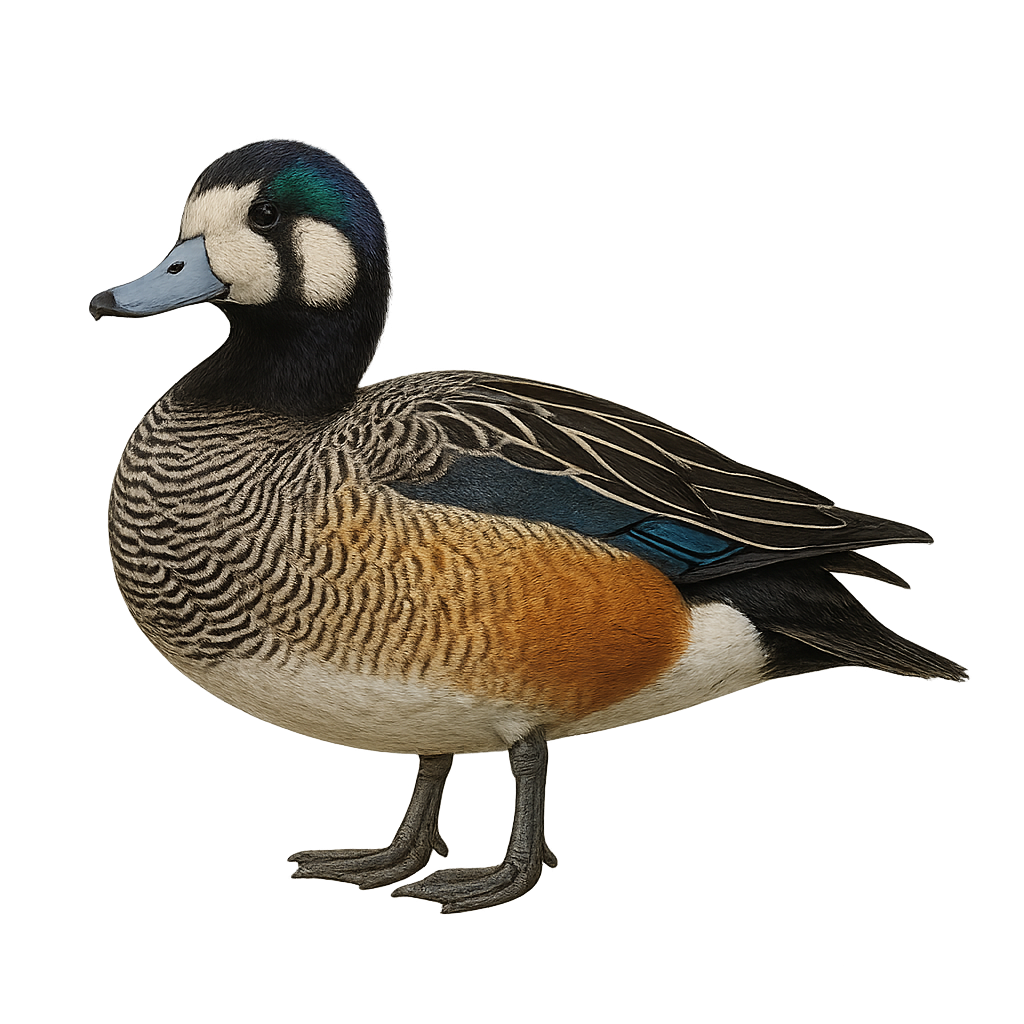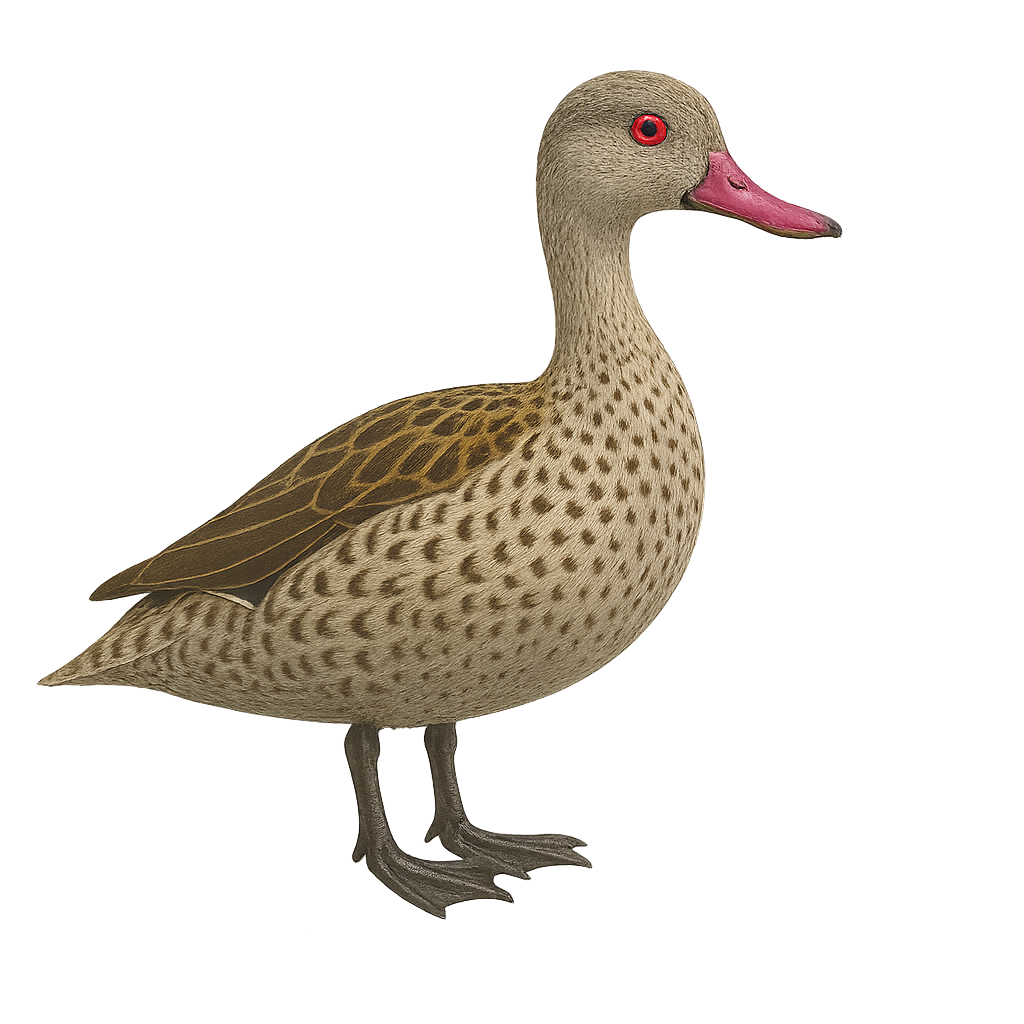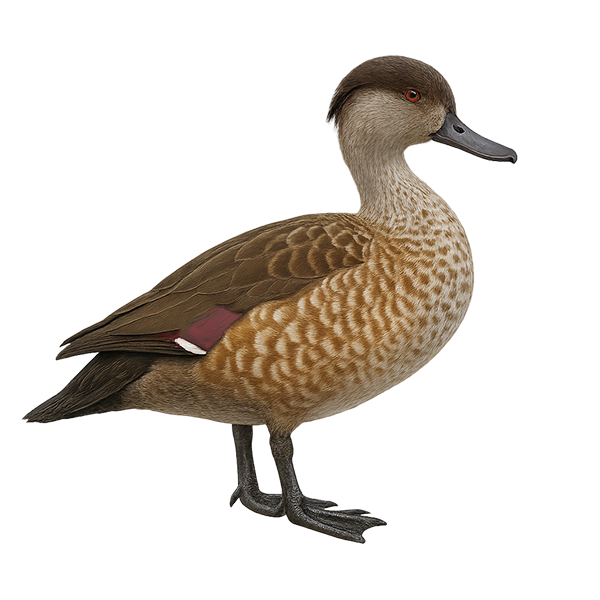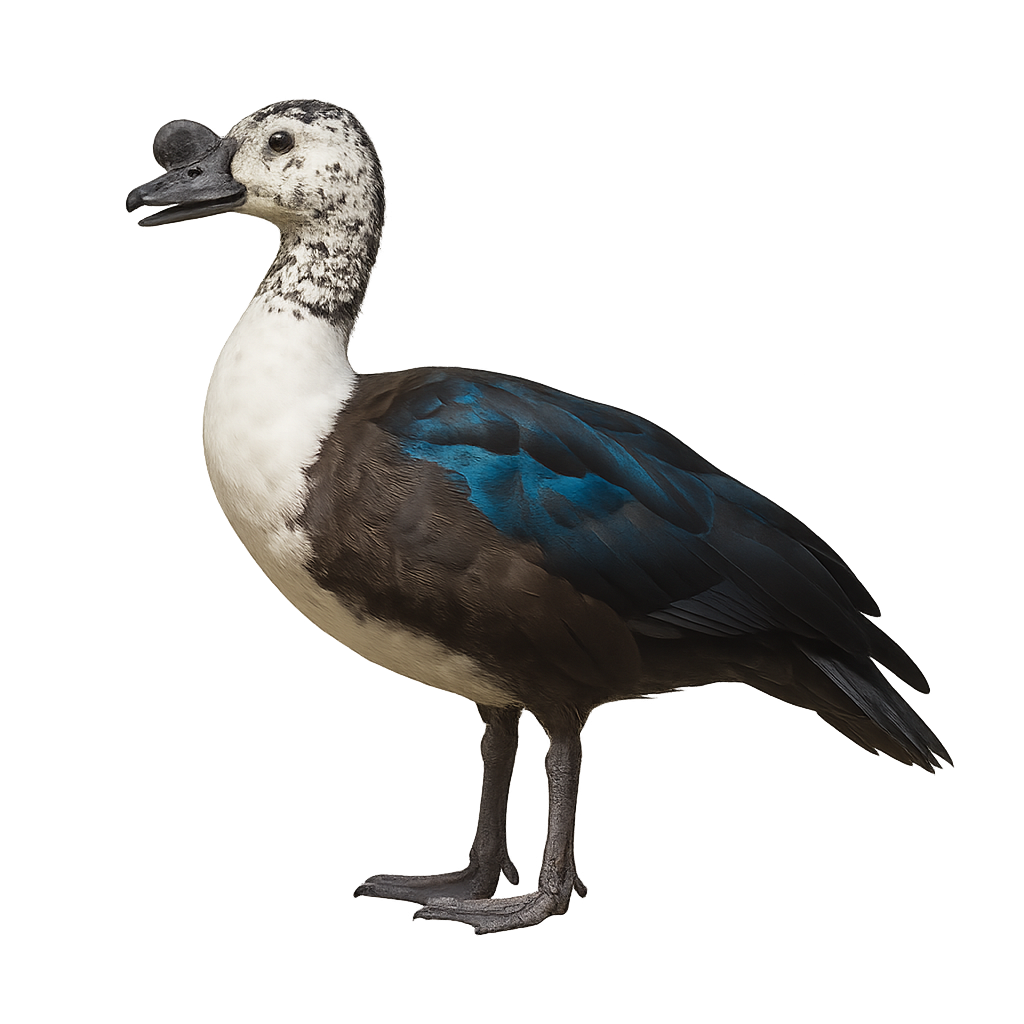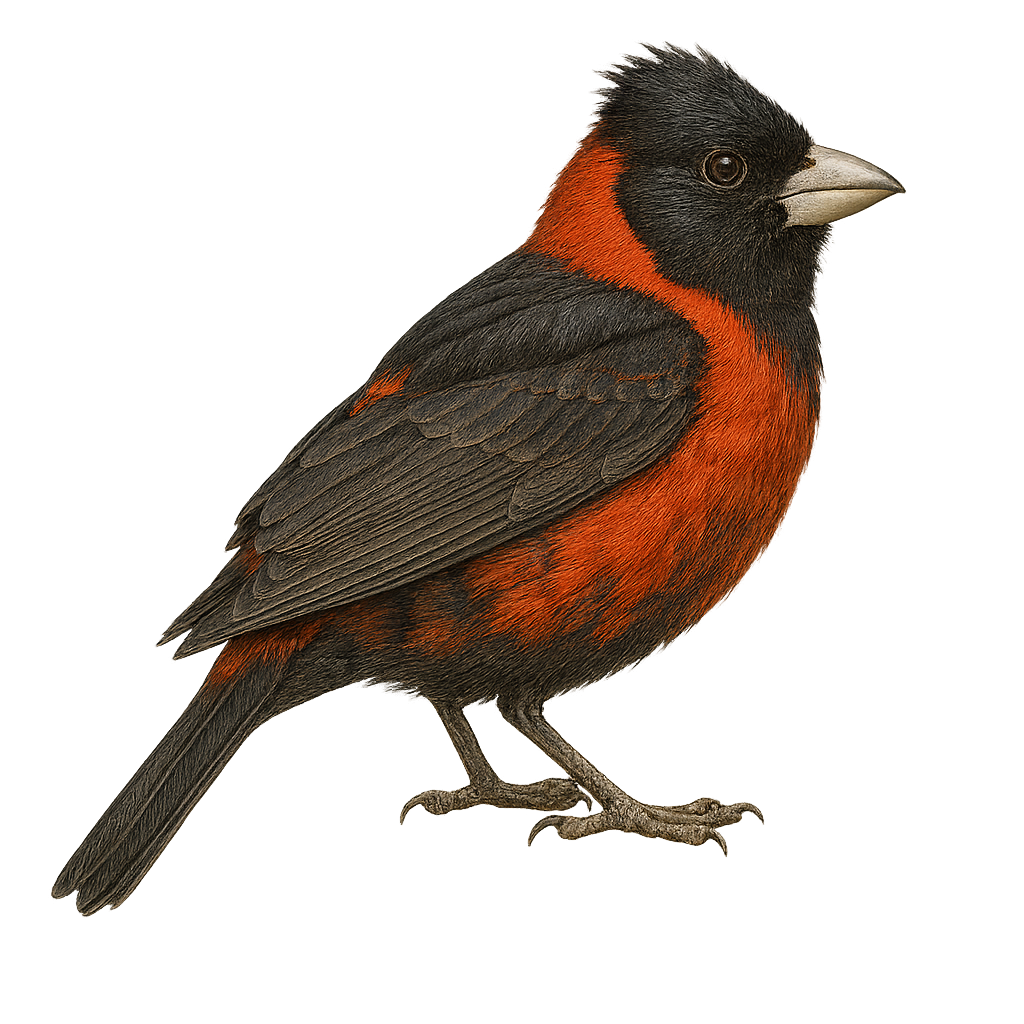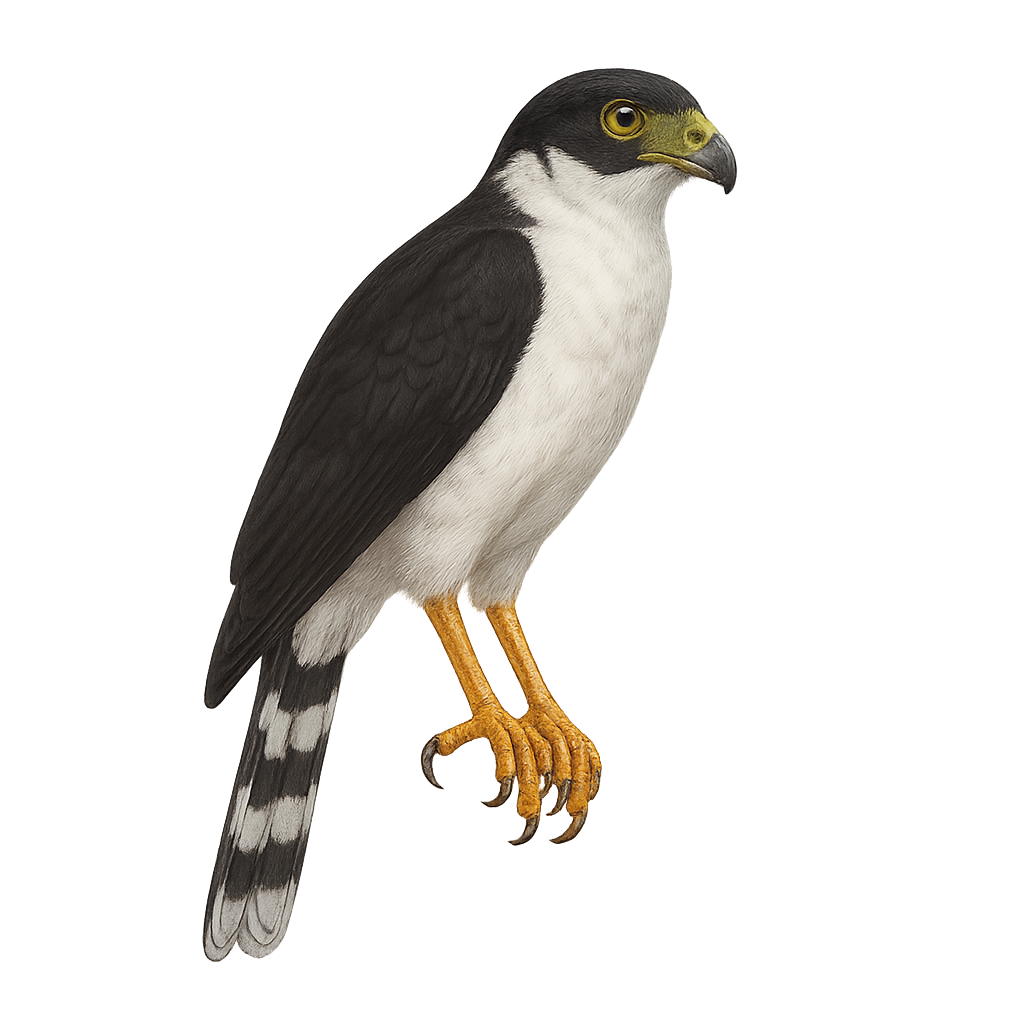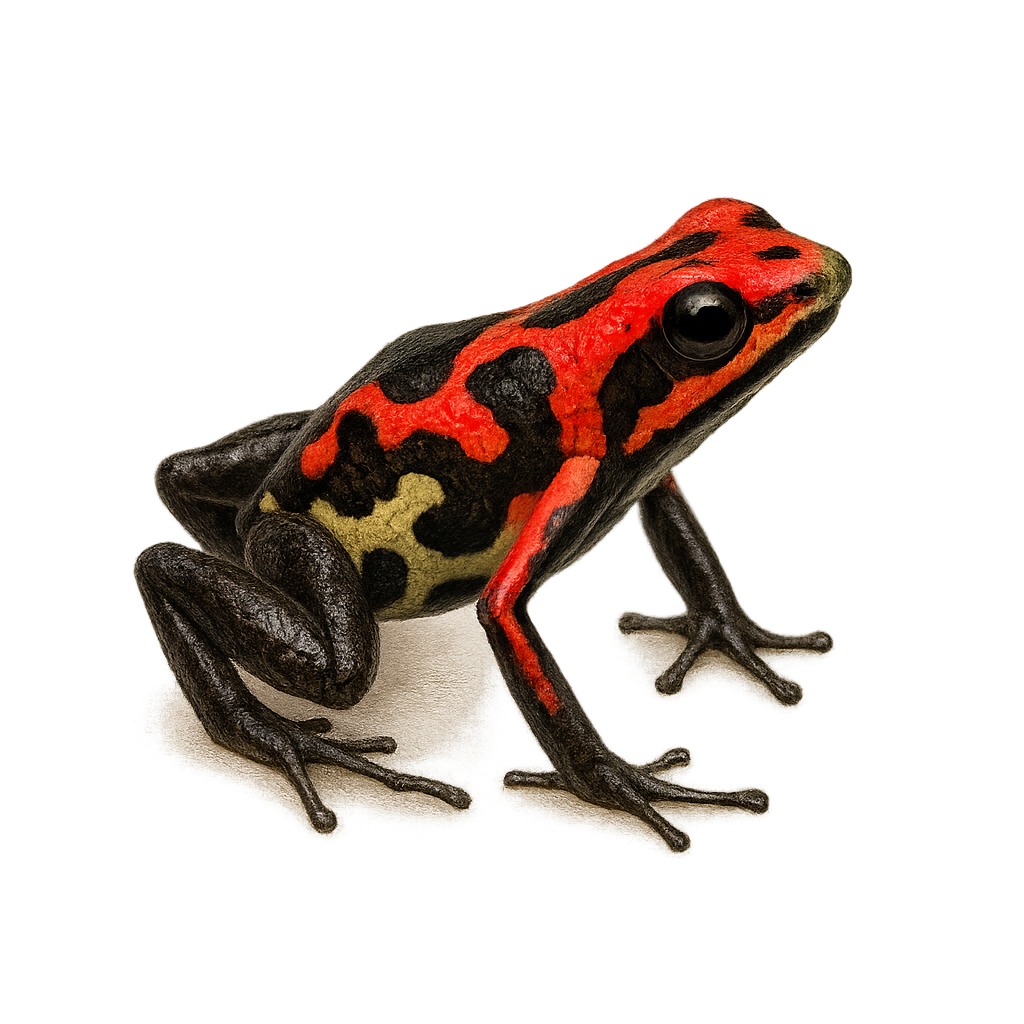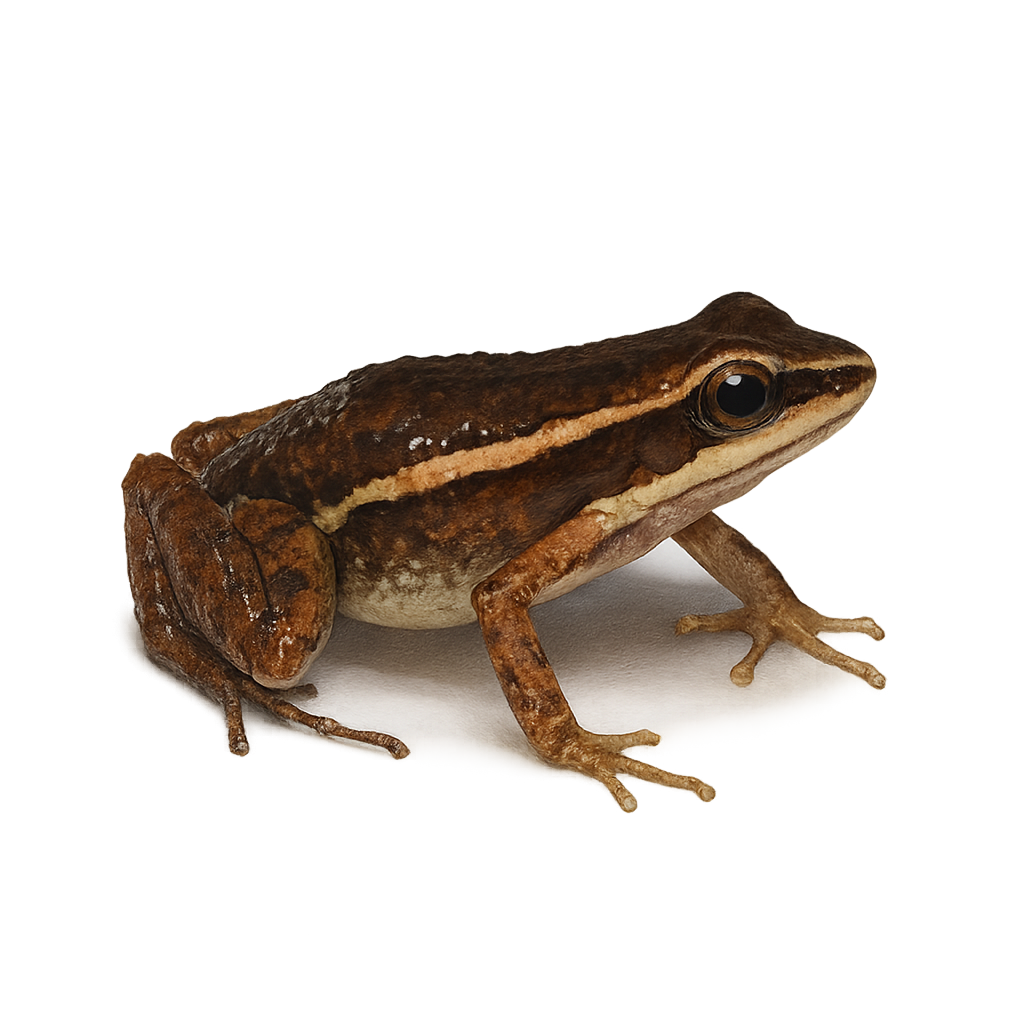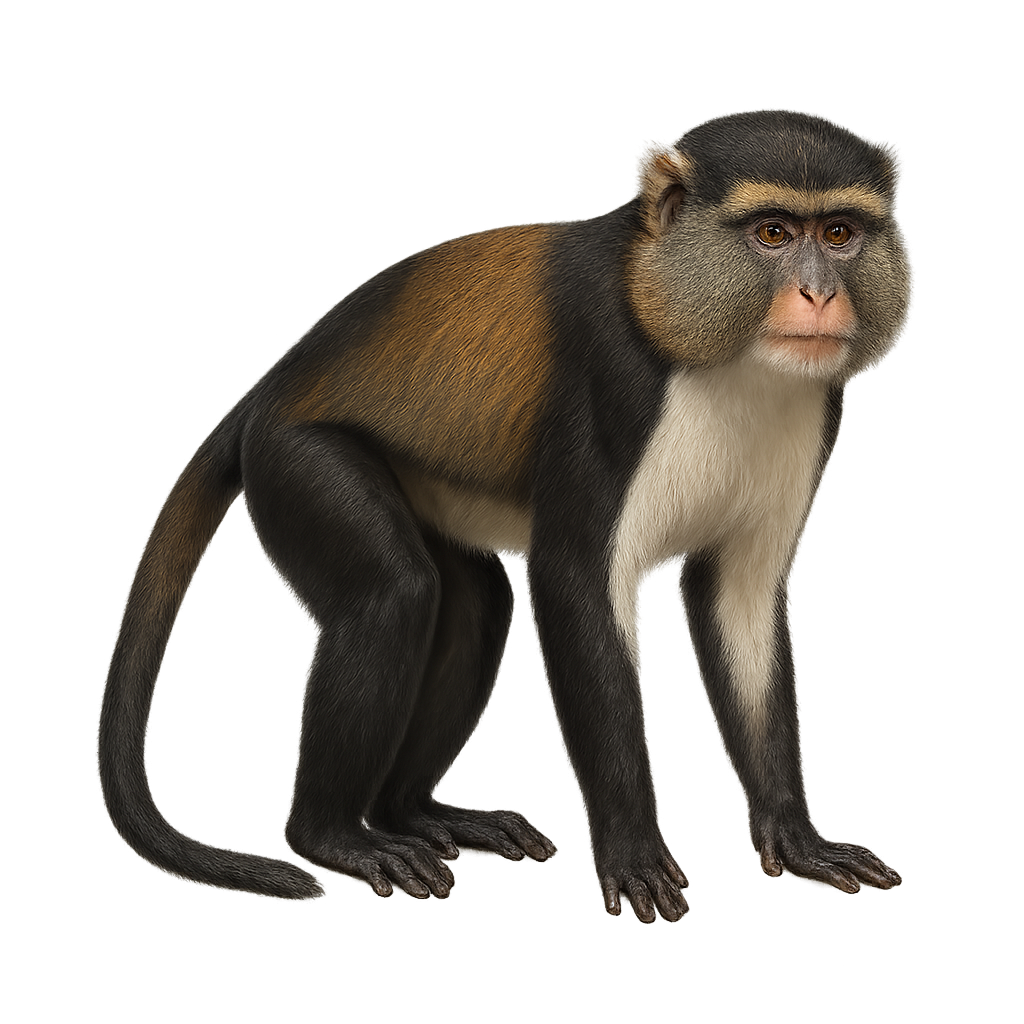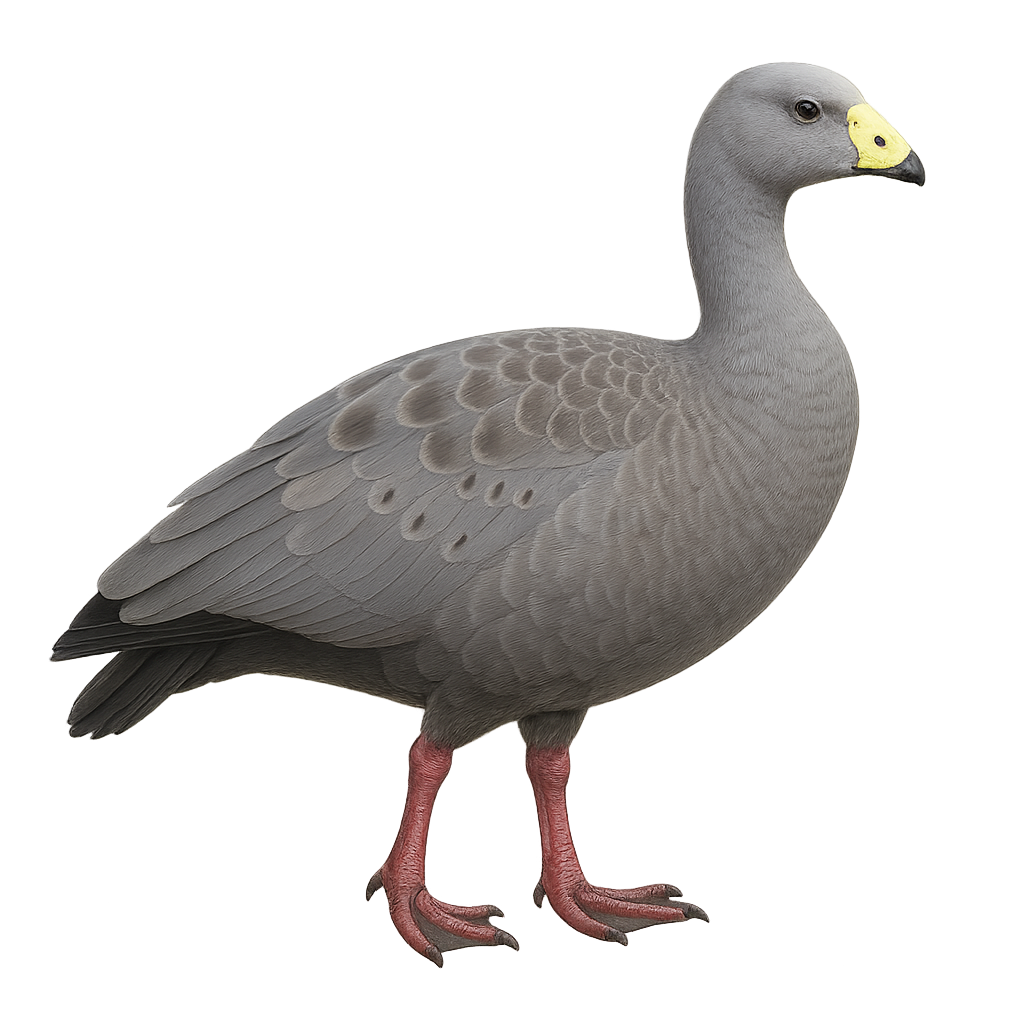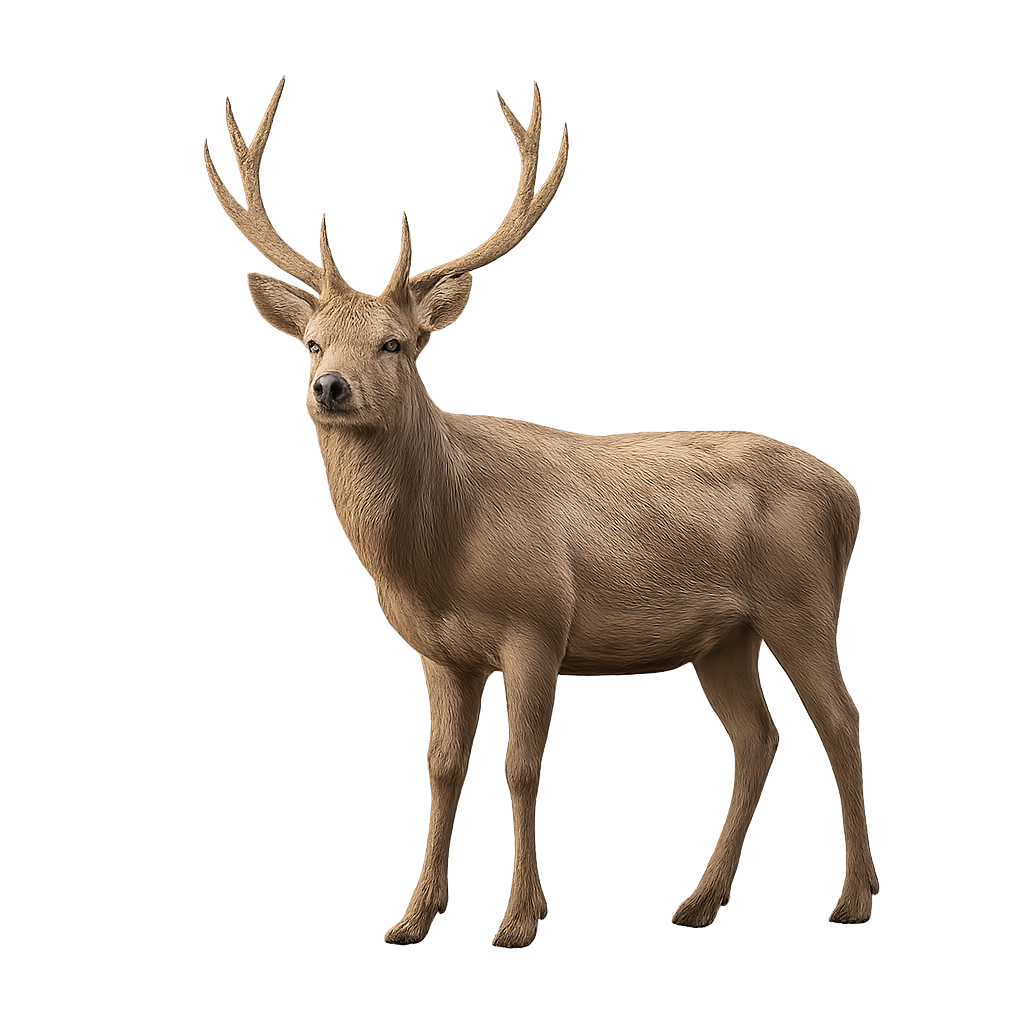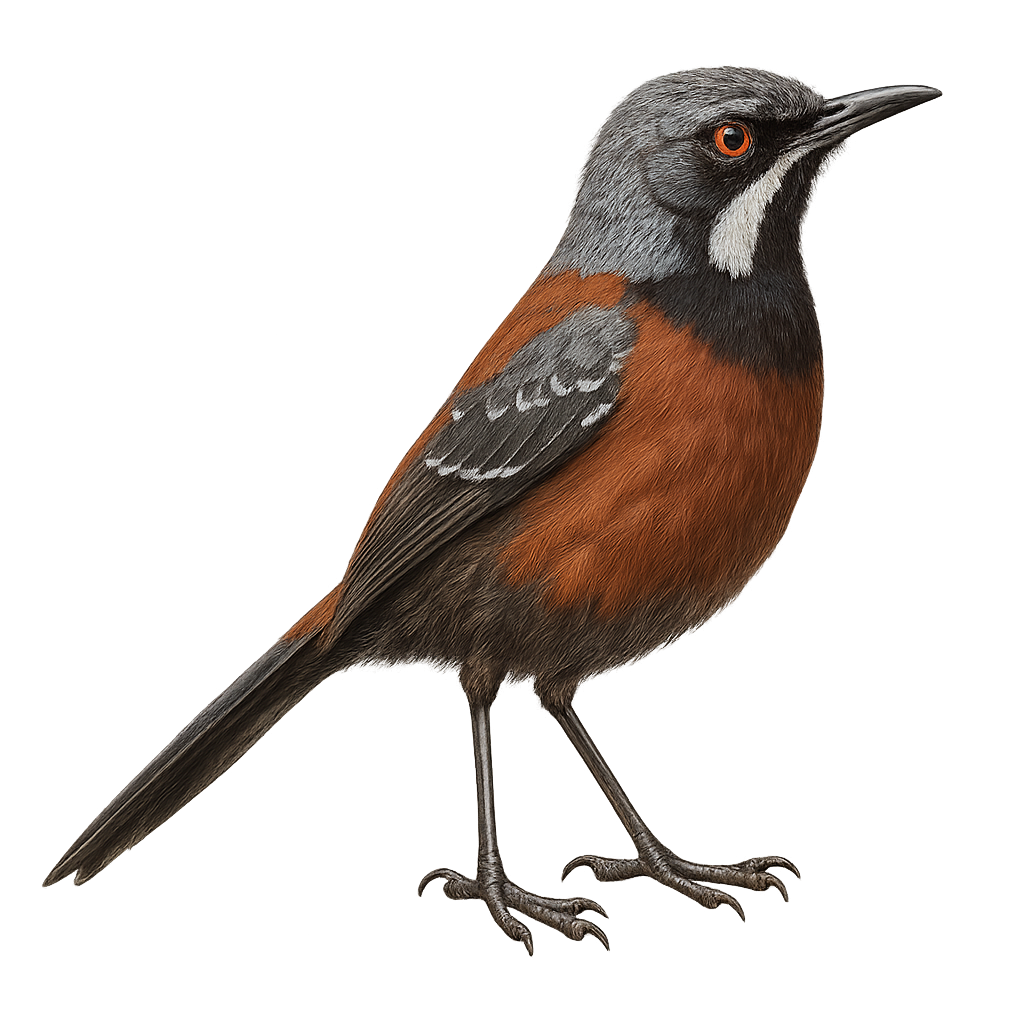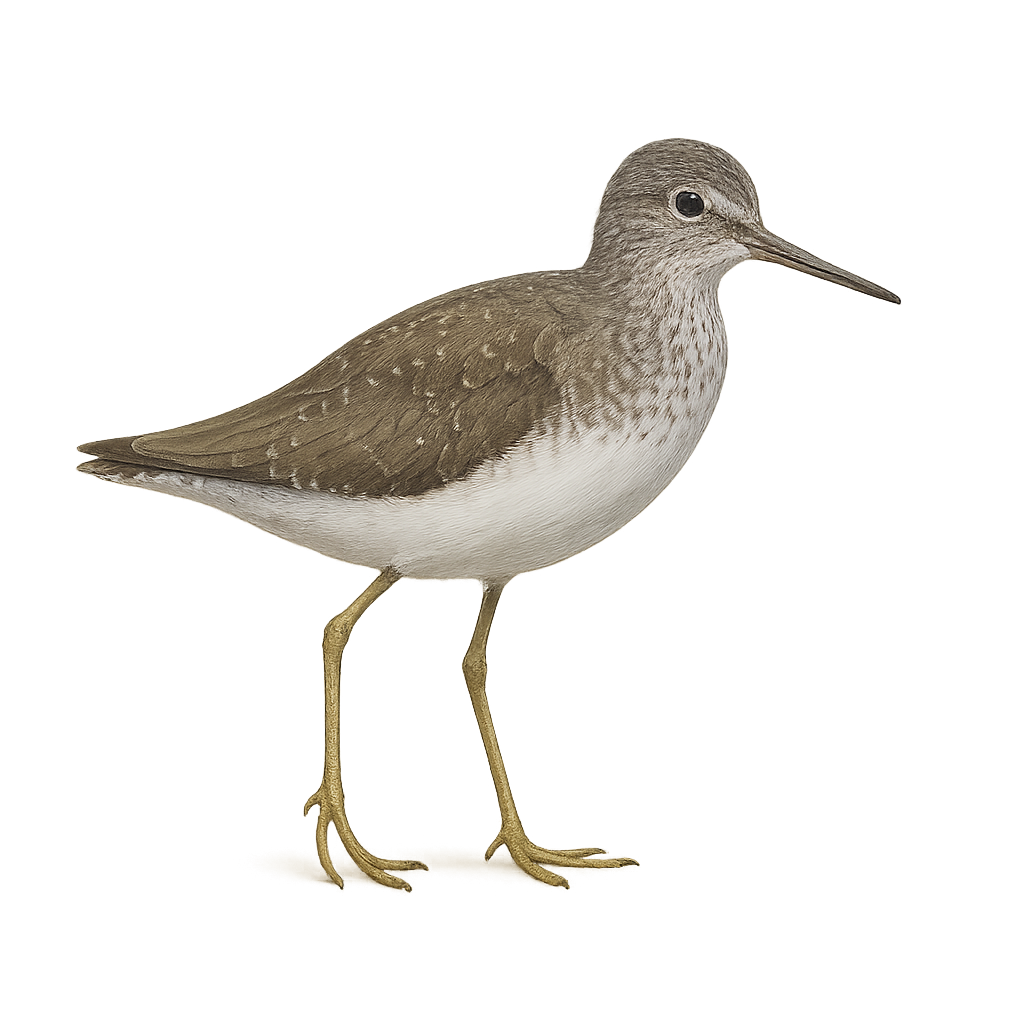The African Buffalo is one of the largest and most powerful herbivorous mammals on the African continent, easily recognizable by its massive body, impressive horns, and dark coat. It primarily inhabits the savannas, grasslands, and open forests of sub-Saharan Africa. This social animal moves in large herds, sometimes composed of hundreds of individuals, which offer protection from predators through the collective strength of the group.
The African Buffalo is a strict herbivore, feeding mainly on grasses and woody vegetation. Although it has a rather calm temperament, it can become extremely aggressive when threatened, and its physical strength makes it a formidable opponent for predators. Despite being a secondary predator, it is vulnerable due to hunting and habitat loss, although conservation efforts have helped stabilize some populations.
The Pycnonotus barbatus, or Common Bulbul, is a medium-sized bird, measuring about 20 cm in length. It is easily recognizable by its black head, white belly, and bright yellow throat. This bird is highly adaptable and can be found in various habitats, from forests to urban gardens. It is known for its melodious and varied song, often heard at dawn. The Common Bulbul is a sociable bird, often seen in small groups. It primarily feeds on fruits, insects, and nectar. Its ability to adapt to different environments makes it a common species in many parts of sub-Saharan Africa.
The Common Black Hawk, scientifically known as Buteogallus anthracinus, is a medium-sized raptor found primarily in coastal regions and riparian forests of Central America and the southern United States. Its plumage is predominantly black with bluish sheen, and it features a distinctive white band on its tail. This bird of prey is often seen soaring above waterways, hunting for prey such as fish, crabs, and small vertebrates. Its call is a sharp, piercing whistle. The Common Black Hawk is territorial, often solitary or in pairs, and builds its nest in trees, usually near water.
The Common Buzzard is a medium-sized diurnal raptor, easily recognizable by its often spotted and banded brown and white plumage, which gives it a particularly variable appearance from one individual to another. It primarily inhabits open forests, hedgerows, and agricultural landscapes in Europe, Asia, and North Africa. The Common Buzzard feeds on small mammals, birds, and occasionally insects, which it hunts on the ground, often perched on a tree or pole, waiting for the right moment to swoop down on its prey.
This raptor is known for its characteristic flight, often soaring in the sky in wide circles. The Common Buzzard is also a migratory bird, leaving some of its breeding grounds in Europe to migrate to warmer regions during the winter. While the population of the Common Buzzard is stable in many areas, it can be affected by habitat loss and human persecution.
Cockatoos are exuberant and colorful birds, known for their spectacular crests and fascinating social behavior. These birds are native to Australia, New Guinea, and neighboring islands. Their plumage, often white with brightly colored accents on the crest or tail, makes them particularly attractive. They are also famous for their intelligence and ability to mimic sounds, including human speech, making them popular as pets.
Cockatoos live mainly in forests, savannas, and coastal areas. They are social birds that form often noisy groups, spending their days searching for food, perching, and interacting with other members of their group. Although some species of cockatoos are protected due to habitat loss and poaching, they remain an iconic symbol of exotic birds.
The Spectacled Caiman is a reptile of the alligator family, primarily found in rivers, swamps, and lakes of tropical Central and South America. It is recognizable by its green-gray skin and smaller size compared to other crocodilians, typically reaching 2 to 3 meters in length. The Spectacled Caiman feeds mainly on fish, amphibians, small mammals, and birds, which it captures with its powerful jaws.
This semi-aquatic animal spends much of its life in the water, where it hunts and hides in the vegetation along the shores to avoid predators. While the Spectacled Caiman is generally discreet, it can become dangerous if threatened. Its population is stable, although the species is sometimes threatened by illegal hunting and habitat loss.
The Crowned Hornbill, or Lophoceros alboterminatus, is a medium-sized hornbill from sub-Saharan Africa, easily recognized by its reddish-orange bill topped with a small casque, its white chest, and white wingtips that are noticeable in flight. It inhabits coastal forests, woodlands, and forest edges from Kenya to northeastern South Africa. Omnivorous, it feeds on fruits, insects, and occasionally small animals. It is often seen in pairs or small, noisy groups. Although relatively common and adaptable to secondary forests, the Crowned Hornbill is still affected by habitat loss.
The Cassin's Hornbill is a fascinating bird belonging to the Bucerotidae family. It is distinguished by its black and white plumage, large bill, and distinctive crest. This bird is primarily arboreal, living in the humid tropical forests of Central Africa. It mainly feeds on fruits, but also insects and small animals. Known for its loud vocalizations and social behavior, it is often observed in small groups. Although relatively common in its natural habitat, deforestation poses a threat to its population. Its ability to adapt to different forest environments allows it to survive despite environmental pressures.
The Furcifer lateralis, or carpet chameleon, is a species of chameleon endemic to Madagascar. This reptile is particularly admired for its vibrant colors and ability to change hues depending on its environment or mood. It typically measures between 17 and 25 cm in length, including its tail. Males often display more vivid colors than females, with distinct band patterns. This chameleon primarily inhabits humid forests and scrub areas, but can also be found in agricultural zones. It mainly feeds on insects, capturing them with its extendable tongue. Although relatively common, deforestation threatens its natural habitat.
The common chameleon, Chamaeleo chamaeleon, is a fascinating reptile known for its ability to change color. Native to Mediterranean regions, it primarily inhabits forests, scrublands, and shrub areas. This chameleon is a master of camouflage, using its color-changing ability to blend into its surroundings and evade predators. It has an extremely long and fast tongue, which it uses to catch insects. Its vision is also remarkable, with eyes capable of moving independently, allowing it to monitor its environment in 360 degrees. Although primarily arboreal, it occasionally descends to the ground to move from tree to tree.
The common vole, or Microtus arvalis, is a small rodent belonging to the Cricetidae family. It is widely distributed across Europe and Western Asia. This rodent measures about 9 to 12 cm in length, with a tail of 3 to 4 cm. Its fur is typically grayish-brown on the back and lighter on the belly. It primarily inhabits meadows, cultivated fields, and roadsides. The common vole is an herbivore, feeding on grasses, roots, and seeds. It plays a crucial role in the ecosystem as prey for many predators such as birds of prey and foxes. Its population can fluctuate significantly from year to year, thus influencing the abundance of its predators.
The Curve-winged Sabrewing, scientifically known as Pampa curvipennis, is a medium-sized hummingbird found primarily in the tropical and subtropical forests of Mexico. It is characterized by its curved wings and relatively long tail. The plumage is generally green with metallic sheens, and it features a contrasting white throat. Both males and females look similar, although males are slightly larger. They primarily feed on nectar but also consume small insects to supplement their diet. Their fast and agile flight allows them to move easily between flowers.
The Comb Duck, Sarkidiornis melanotos, is a medium-sized waterfowl easily identified by the prominent knob on its bill, particularly in males. It features a distinctive black and white plumage with metallic sheen on its wings. This duck primarily inhabits wetlands, lakes, and slow-flowing rivers in sub-Saharan Africa and South Asia. Social by nature, it is often seen in small groups. Its diet mainly consists of aquatic plants, seeds, and insects. Although generally tolerant of humans, it can become wary if disturbed. Conservation of its habitat is crucial for its survival, as it is vulnerable to environmental changes.
The Chiloe Wigeon, or Anas sibilatrix, is a medium-sized waterfowl known for its distinctive plumage. It features a white head with metallic green bands, a brown back, and a white belly. Its bill is blue-gray with a black tip. Native to South America, it primarily inhabits wetlands, lakes, and rivers. This duck is often seen in small groups and feeds mainly on aquatic plants, insects, and small crustaceans. Although generally not very shy, it can be cautious in the presence of threats. Its breeding season typically extends from spring to summer, and it builds its nest near water, often hidden in dense vegetation.
The Cape Teal, Anas capensis, is a small dabbling duck native to sub-Saharan Africa. It is easily identifiable by its bright red bill and pale grey plumage speckled with dark spots. Males and females are similar, though females are slightly smaller. This duck prefers aquatic habitats such as lakes, marshes, and slow-moving rivers. It primarily feeds on aquatic plants, seeds, and insects. Although generally discreet, it can form large flocks outside the breeding season. Its population is stable, but it is sometimes threatened by habitat loss and water pollution.
The Crested Duck, or Lophonetta specularioides, is a medium-sized Andean duck, recognizable by its subtle crest and brown-gray plumage with iridescent wing highlights. It inhabits high-altitude lakes, marshes, and slow rivers, mainly in the Andes and Patagonia. Well adapted to cold, windy environments, it is omnivorous, feeding on aquatic vegetation, invertebrates, and occasionally small fish. This duck is gregarious yet discreet, often seen in small groups. Its population is considered stable overall.
The Sarkidiornis sylvicola, commonly known as the Comb Duck, is a distinctive waterfowl known for its unique appearance. This large duck features predominantly white plumage with iridescent sheens on its wings and back. Males are notable for a prominent knob on their bill, which becomes more pronounced during the breeding season. Females are smaller and have duller plumage. This duck primarily inhabits wetlands, lakes, and rivers in the tropical and subtropical regions of South America. It is often seen in small groups, feeding on aquatic plants, seeds, and insects. Although currently listed as "Least Concern," habitat degradation could pose a future threat.
The Capybara is the largest rodent in the world, easily recognizable by its massive body and short, light brown fur. This semi-aquatic mammal primarily inhabits wetland areas of South America, near rivers, lakes, and swamps. The Capybara is an excellent swimmer and spends much of its time in the water, where it feeds mainly on aquatic grasses, plants, and fallen fruits.
Naturally social, the Capybara lives in large groups of 10 to 20 individuals, often organized around a social hierarchy. The groups spend a lot of time grooming each other and protecting each other from predators. Although it is a calm and docile animal, the Capybara is threatened by the loss of its natural habitat due to urbanization and pollution of rivers. However, its population remains relatively stable, and it is often seen in protected areas.
The Caracal is an elegant feline, easily recognizable by its pointed ears adorned with tufts of black fur. It has a short tawny coat that allows it to blend into the dry, rocky environments where it lives, primarily in savannas, steppes, and semi-desert areas in Africa and Western Asia. This agile and fast predator primarily hunts birds, small mammals, and reptiles, often catching prey by leaping great heights to snatch them in mid-air.
The Caracal is a solitary and territorial hunter. It uses its long back legs to make impressive jumps, capable of reaching up to three meters high. While the species is relatively widespread, it faces threats due to habitat loss and poaching. The Caracal is protected in several regions, and its population is monitored.
The Crimson-collared Grosbeak, Periporphyrus celaeno, is a striking bird with vivid red plumage, primarily red with black wings and tail, and a contrasting black head. It is endemic to the humid tropical forests of northeastern Mexico, where it inhabits dense undergrowth and forest edges. This bird is often seen alone or in small groups, feeding on fruits, seeds, and insects. The Crimson-collared Grosbeak is known for its melodious and varied song, which echoes through the canopy. Although it is relatively common within its restricted range, deforestation poses a potential threat to its natural habitats.
The Collared Forest Falcon, or Micrastur semitorquatus, is a medium-sized raptor primarily found in the dense tropical forests of Central and South America. It is distinguished by its dark plumage, often black or dark gray, with a distinctive white collar around its neck. This agile and discreet predator feeds mainly on small mammals, birds, and reptiles. Known for its ability to hunt in cluttered forest environments, it uses silent flight and great agility. Although not extensively studied, it plays a crucial role in the ecological balance of its natural habitat.
The Cauca poison frog is a small, brightly colored frog native to the humid rainforests of Colombia. Its skin features vivid and contrasting patterns, often red and black, serving as a warning to potential predators of its toxicity. This diurnal species primarily feeds on small insects and other arthropods, playing a crucial role in the ecosystem by regulating insect populations. Harlequin Poison Frogs are known for their territorial behavior, with males vigorously defending their space against intruders. Their reproduction involves parental care, with males carrying tadpoles on their backs to suitable water points. Unfortunately, this species is threatened by deforestation and habitat loss.
The Cauca poison frog is a small frog from the Dendrobatidae family, native to the humid tropical forests of South America. It is characterized by its smooth skin and bright colors, often a mix of green and brown, which allow it to blend effectively into its natural environment. This species is generally active during the day and primarily feeds on small insects. It is known for its territorial behavior, with males vigorously defending their space against intruders. Reproduction mainly occurs during the rainy season when conditions are optimal for tadpole development.
The Campbell's monkey is a medium-sized primate, recognizable by its olive-gray fur and black face surrounded by white hair. It primarily inhabits the tropical forests of West Africa, living in complex social groups. These monkeys are known for their sophisticated communication system, using a variety of calls to signal predators or other threats. They primarily feed on fruits, leaves, and insects. Although adaptable, deforestation and hunting pose threats to their survival. Their social behavior and intelligence make them a fascinating subject of study for primatologists.
The Cape Barren Goose, or Cereopsis novaehollandiae, is a bird species endemic to Australia. It is characterized by its ash-grey plumage and short black bill surrounded by a bright yellow cere. This bird, measuring about 75 to 100 cm in length, is often seen in small groups on coastal islands and wetlands in southern Australia. Although primarily herbivorous, feeding on grasses and aquatic plants, it may occasionally consume insects. The Cape Barren Goose is known for its ability to travel long distances in search of food, although it is generally sedentary.
The axis deer is a cervid native to the Indian subcontinent, recognized for its characteristic spotted coat. It primarily inhabits forests and open grasslands, where it feeds on leaves, fruits, and grasses. This social animal forms herds and is often seen grazing or resting in wooded areas. Although not threatened, it faces dangers from habitat loss and illegal hunting.
The Kashmir Stag, also known as the Hangul, is a majestic species primarily found in the mountains of the Himalayas and Kashmir. This deer is easily recognizable by its dense, woolly coat, which helps it withstand the cold temperatures of high altitudes. It has impressive antlers, which can grow to a considerable size in adult males. The females, on the other hand, are generally smaller and do not have antlers.
This deer inhabits high-altitude forests, alpine meadows, and mountainous regions covered in snow. It feeds primarily on herbaceous vegetation, foliage, and young shoots. The Kashmir Stag is a relatively shy and discreet animal, often living in small groups or family units. While its population remains relatively stable, it faces threats such as habitat loss due to deforestation and poaching, especially for its antlers.
The Cape Rockjumper, or Chaetops frenatus, is a bird endemic to the mountainous regions of southern Africa, primarily in South Africa. It is recognizable by its distinctive rufous tail and brown-grey plumage. This bird prefers rocky and mountainous habitats where it can move nimbly in search of food. It primarily feeds on insects and small invertebrates, which it captures by foraging on the ground or catching in flight. The Cape Rockjumper is a social bird, often observed in small family groups. Its ability to adapt to harsh environments makes it a fascinating example of South African biodiversity.
The Green Sandpiper is a medium-sized wader, easily recognizable by its green-brown plumage with mottled patterns and its white tail, which gives it its name. During the breeding season, males display more colorful plumage, with iridescent green tones and white markings on the wings and tail. Outside of the breeding season, both sexes adopt a more uniform plumage, often olive-brown with shades of white and gray.
The Green Sandpiper is primarily found in wetlands, marshes, estuaries, and lake shores, where it feeds on small aquatic invertebrates, insects, and crustaceans that it uncovers while probing in the mud. While this species is migratory, it does not travel as long distances as some other waders, primarily moving between Central Europe and its wintering sites in North Africa. The Green Sandpiper remains generally stable, but it faces threats from the loss of its wetland habitats and pollution.
The Common Redshank is a medium-sized wader, easily recognizable by its long red legs and straight bill. Its plumage is typically gray-brown with shades of white on the belly and dark markings on the back and wings. During the breeding season, it displays brighter colors, especially on the head and chest, which become duller outside of this period. This wader is often seen in wetlands, marshes, estuaries, and lake shores, where it feeds mainly on small invertebrates, insects, and worms found by probing in the mud.
The Common Redshank is a migratory bird that travels between its breeding grounds in Northern Europe and its wintering sites in Africa and Asia. While its population remains generally stable, the Common Redshank faces threats from habitat loss and pollution. It is sometimes considered a vulnerable species in certain regions.



